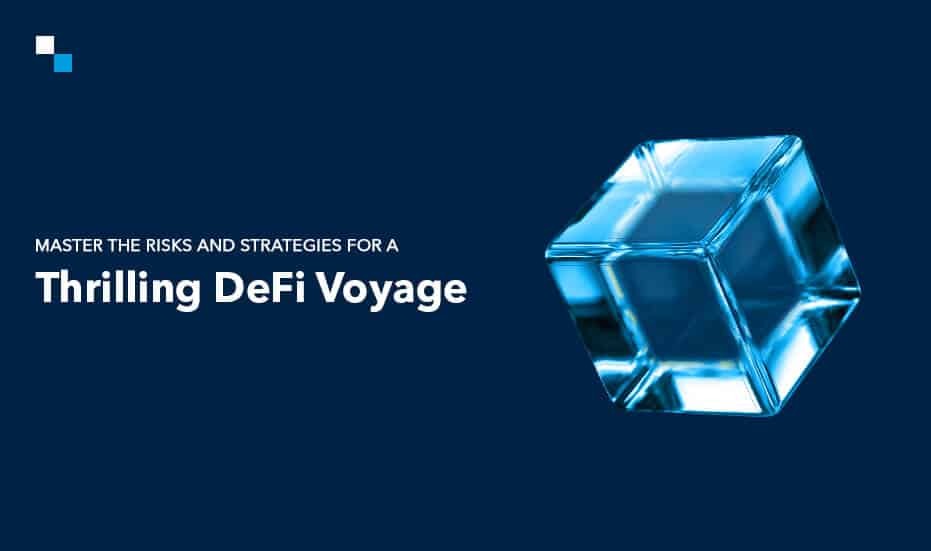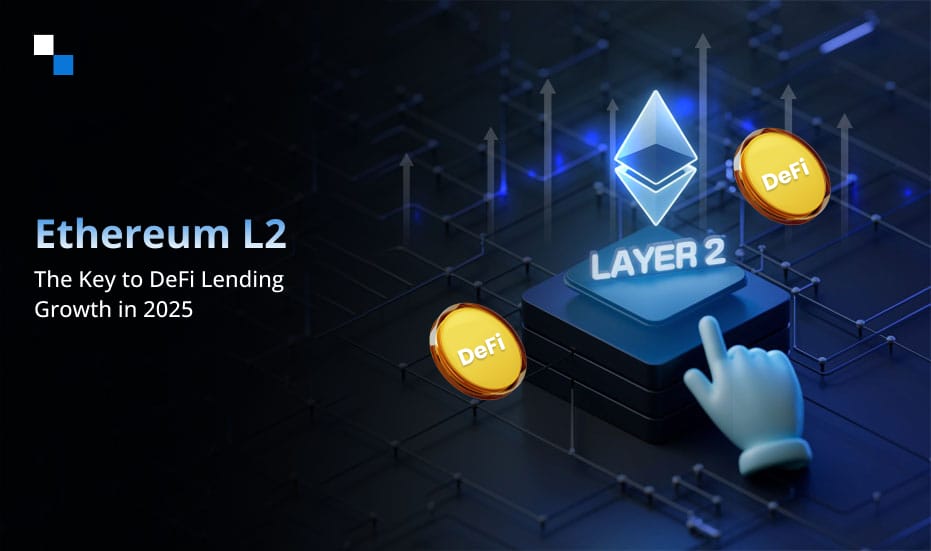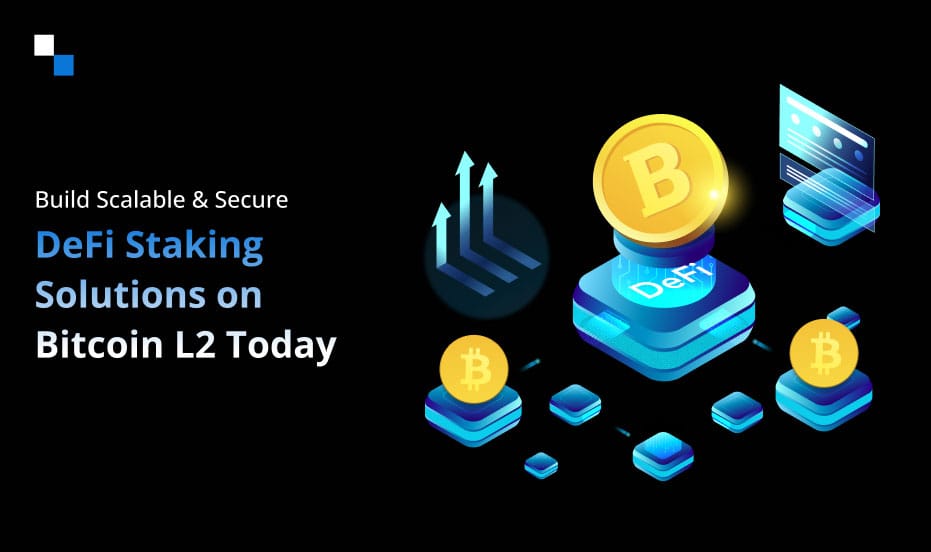The world of DeFi is a thrilling one, promising a future of financial freedom and peer-to-peer transactions. But like any uncharted territory, it also harbors hidden dangers. Before you set sail on your DeFi voyage, it’s crucial to understand the potential storms you might face and how to navigate through them.
Delving Deep into DeFi Risks and Solutions
Let’s explore various risks in Decentralized Finance Development and their solutions:
Smart Contract Sharks: Exploitable Code
The core of DeFi applications is smart contracts—self-executing programs that specify actions according to predefined financial agreements. Though being immutable on the chain, these contracts may nevertheless have vulnerabilities. Hackers could make use of those weaknesses, withdraw deposited funds, and cause huge losses. All vividly remember the DAO hack in 2016, with more than $60 million stolen due to a bug in its smart contract.
Solutions: Auditing Your Anchors
- Scrutinize Smart Contract Audits: Never jump onto a DeFi platform just because many users are present. In order to reduce Risks in DeFi, always check whether the smart contracts of the respective platform have gone through rigorous audits or not by independent security firms with a track record. Such audits help in the identification and fixing of potential vulnerabilities before they might get exploited.
- Beware of Unproven Protocols: With innovation, comes caution. Be wary of a DeFi platform which has brand new, untested smart contracts. These audits help identify and address potential vulnerabilities before they can be exploited.
Impermanent Loss: A Poolside Peril
With DeFi lending, one can earn interest simply from providing liquidity to pools in which users can borrow and trade crypto assets. However, one of the sea monsters that swim in these waters is an impermanent loss. If the price moves much during withdrawal, you might be left with a smaller total value compared to when you held them directly. Imagine you had put $100 of Ethereum and $100 of Bitcoin into some liquidity pool. Now, if the price of ETH goes very high and at the same time the price of BTC falls, then you may get less than $200 in value when you withdraw. Risk Assessment in Decentralized Finance is crucial.
Solutions: Charting a Course to Impermanent Loss Minimization
Be aware of the risks: Prior to getting into DeFi lending, you should know what impermanent loss is. You may want to run some numbers through an online tool that allows one to calculate impermanent loss in order to get a feel for the possible risks involved before you throw your assets in the mix.
Choose Stablecoin Pools: Consider reducing impermanent loss by providing liquidity to pools containing a stablecoin—cryptocurrencies pegged to real-world assets like the US dollar. Although returns could be lesser, the price of stablecoins is designed to be relatively stable, making them less risky in regard to impermanent loss.
Liquidity Loch Ness: When the Pool Runs Dry
DeFi thrives on readily available assets to facilitate smooth transactions. However, a sudden surge in withdrawals or trading activity can drain liquidity pools, creating a “liquidity loch ness” monster. Imagine wanting to withdraw your funds from a pool, but there aren’t enough assets readily available to fulfill your request. This can lead to significant price swings and difficulty exiting your positions.
Solutions: Avoiding the Liquidity Loch
- Monitor Pool Depth: Always check the liquidity depth of a pool before depositing your assets. Deeper pools with a higher amount of locked-in assets are less susceptible to liquidity issues.
- Consider Decentralized Exchanges (DEXes) with Automated Market Makers (AMMs): Many DEXes utilize AMMs, which automatically adjust pricing based on supply and demand. While not a foolproof solution, AMMs can help maintain some level of liquidity even during periods of high volatility.
Market Maelstrom: Riding the Crypto Rollercoaster
The inherent volatility of cryptocurrencies translates directly to DeFi markets. Rapid price fluctuations can magnify potential losses for investors unfamiliar with this level of DeFi risk. Imagine a scenario where you invest in a DeFi project, and its token price plummets overnight due to unforeseen market events.
Solutions: Weathering the Market Storm
- Invest Wisely: Only invest in DeFi what you can afford to lose. DeFi is not a get-rich-quick scheme, and the market can be unforgiving. Start small and gradually increase your exposure as you gain experience and confidence.
- Diversify Your Portfolio: Don’t put all your eggs in one basket. Spread your investments across different DeFi protocols and asset classes to minimize risk.
Complexity Kraken: User Error and the DeFi Deep
DeFi can be a complex ecosystem for newcomers. Unfamiliarity with the technology or protocols can lead to costly mistakes, like sending funds to the wrong address or falling victim to phishing scams. Unlike traditional finance, DeFi often lacks centralized customer support to help rectify such errors. Imagine accidentally sending your life savings in crypto to a typed address – there’s no bank to call and reverse the transaction.
Solutions: Taming the Complexity Kraken
- Educate Yourself: Before venturing into DeFi, invest time in learning about the technology, protocols, and common pitfalls. Numerous online resources, tutorials, and communities can guide your education.
- Start Small and Experiment: Don’t jump into complex DeFi applications right away. Begin with user-friendly platforms and experiment with small amounts to gain practical experience.
- Beware of Scams: DeFi can be a breeding ground for scams. Always be cautious of unsolicited offers, double-check website addresses before interacting with any platform, and never share your private keys with anyone to reduce DeFi risks. Remember, if something seems too good to be true in DeFi, it probably is.
Centralized Custodian Charybdis vs. Self-Custody Scylla
One of the most important decisions in DeFi is how you store your crypto assets. Centralized exchanges offer custodial services whereby they hold their private keys on your behalf. At the very least, this is pretty easy to do, but this introduces counterparty risk—if something happens to the exchange via a hack or bankruptcy, you might never see your funds again. On the other hand, self-custody with hardware wallets grants absolute control over one’s assets at a higher level of technical complexity and with the inherent risk of losing your private key and thereby excluding yourself from your funds forever.

Solutions: Navigating the Custody Conundrum
- Assess Your Needs: This is based on your risk tolerance and technical expertise in deciding on centralized custodians or self-custody.
- Research Reputable Custodians: If you do go for a centralized custodian, at least make sure to check their security and reputation in advance so that you know you’re leaving your assets in good hands.
- Hardware Wallets: Consider using a secure hardware wallet for storing private keys in self-custody. They’re essentially offline devices with the highest order of security but require careful management lest you misplace them.
Final Words
Mastering these DeFi risks, having been equipped with the relevant rock-solid solutions, will help you start your DeFi journey with a much clearer roadmap ahead and, most importantly, a life jacket in your hand. Remember, DeFi empowers you to take personal charge of your finances; therefore, with power comes responsibility—educate yourself and be cautious while sailing. Be unafraid to ask for the DeFi community’s help. An adequate amount of knowledge and awareness can help unlock the vast potential of DeFi while minimizing its associated risks. Want to stay safe from DeFi risks, get in touch with Antier, the best DeFi development company for all your project requirements.





